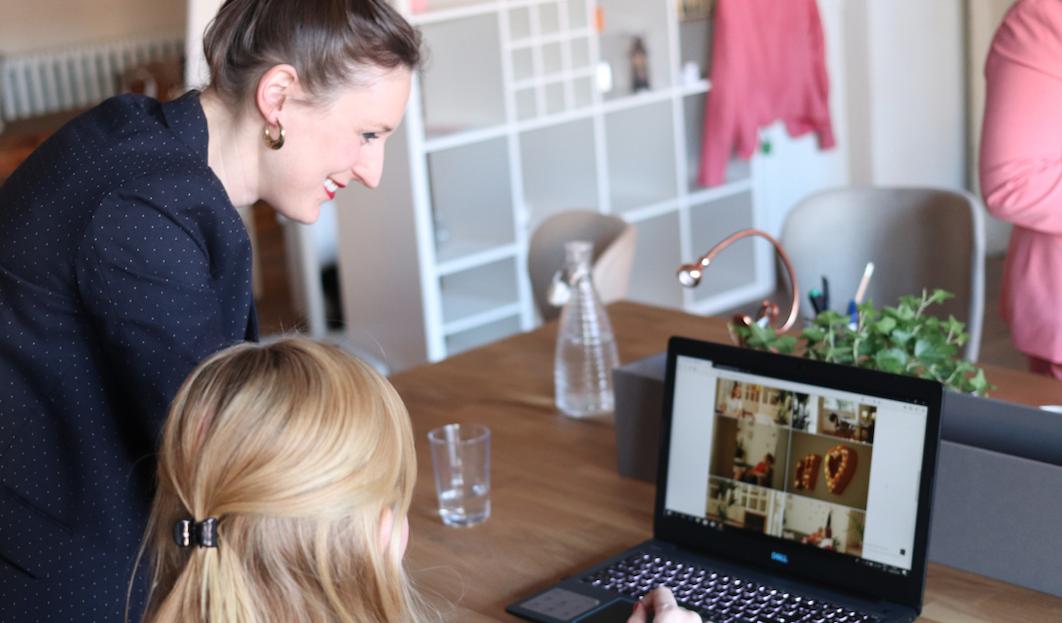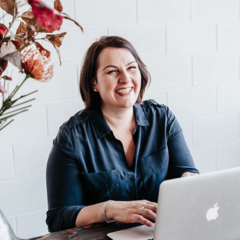
Lorissa Garcia: 3 Essential Qualities Of A Great Leader
Wondering what it takes to be a great leader? For this Member Spotlight, we sat down with one of our Leadership Skills panellists, Lorissa Garcia, ahead of our How To Motivate & Inspire Your Team event on 11 March 2020, to ask our burning questions about what’s going wrong in Australian workplaces and how to foster a positive and efficient team.
Lorissa is an HR Leadership & Capability Coach at lorissagarcia.com (and our very own She Mentors member!) with 15 years' experience in operational and strategic HR practices. She specialises in coaching and mentoring for HR practitioners (People Partners), and facilitation and consulting for ambitious, human-centred organisations.
You recently facilitated an amazing Virtual HR Roundtable where HR practitioners from around the world discussed the fundamentals of Diversity & Inclusion. Can you let us in on some of the biggest insights that were covered?
The Virtual HR Roundtable series is an opportunity for People Partners (HR or any people leader) to explore interesting topics in the people space.
With trends like the #metoo movement, a focus on multigenerational workforces, gender identity and gender equity, Diversity Equity and Inclusion is high on the list of challenges for HR folk – as it should be. It's a really fascinating area that a lot of HR practitioners and leaders are a little cautious of – for fear of doing or saying the wrong thing – when in fact we need to be normalising these conversations in our workplaces. As organisations, we need to be clear on WHY it's important for us to talk about and work on better diversity – for the organisation and the individuals within. By not bringing D&I discussions to life in your organisation, your organisation is making a choice in itself to ignore the richness that true diversity and inclusion can bring.
There is a saying by Verna Myers, a D&I expert, that “Diversity is being asked to the party, inclusion is being asked to dance”. We need to think about how we are inviting people to the party, and how we enable them to dance in respectful ways.
From your experience of witnessing the ‘inner worlds’ of so many workplaces, is there one major thing that’s disrupting workplace culture and preventing individual/organisational growth?
I am sure some organisations would say it's the quality of the coffee or the number of beers in the fridge on a Friday night... These are contributors, but are in no way finite in my view.
I think that organisations can be better at allowing people to bring their full selves to the workplace. I talk a lot about full-spectrum cultures; cultures that enjoy diversity of gender, culture, ethnicity, working styles or diversity of thought, for example.
Full-spectrum cultures embrace the differences people have and put in place initiatives to enable that. Organisations that have full-spectrum cultures are flexible in ways that work for the employee and the employer, are human in their approach and know that we are not only an employee when we come to the workplace. They build psychological safety and give trust, allow people to play to their strengths, even so far as experimenting with job-crafting. They invest heavily in their people at every level – leadership through to the individual contributor for awareness and growth.

If you could paint a picture of the ideal workplace, what would it look like? What would it take to operate optimally?
I think the ideal workplace is different and unique to the very workplace and people who are in it. If you talk to my clients, they'll tell you that I talk about context a lot – meaning that every action, behaviour, policy, practice, leadership approach and value needs to suit the context of the organisation they are operating in. For example you couldn't replicate a start-up context – fast paced, ability to pivot and be agile – into a large traditional workplace in a short time. It takes time and the reasons for change need to match the direction of the organisation.
Optimal organisations know the direction they are going and communicate it well and often. They have structures that are relevant to the work they are doing and provide a line of sight to the strategy, making a link to each individuals' contribution. They enable great cultures (relevant, inclusive, context appropriate), have the infrastructure and resources needed to get work done.
Their leadership heads are clear on expectations, demonstrate accountability, have the hard conversations, give freedom to get the work done, provide a blended approach to development and are transparent and ethical in their practices. I could on... for days, but I can't emphasise enough that its leadership led.
“'Diversity is being asked to the party, inclusion is being asked to dance'. We need to think about how we are inviting people to the party, and how we enable them to dance in respectful ways."
Which top three qualities/skills do you think a great leader should possess?
Leadership is hard... It's complex, challenging and ever-changing. In fact, when we look to the foundations of leadership, there is actually no single definition or competency profile for great leadership. But there are plenty of theories, practices, methodologies and development resources like books, podcasts, articles, tools, courses and opinions – plenty of opinions! It’s difficult to choose just three qualities with all of the information and expectations on leadership.
In my (relatively limited) research and experience, good leadership qualities include:
1. Charisma: the ability to communicate well, build a vision, show passion and competence, and operate with a positive mindset. Charisma is about the positive emotional effect you have on people, so I think this is number one on my list.
2. Intimacy: the second quality is a word that isn't often used but its about professional 'intimacy'. Intimacy is about authentically building social, experiential, intellectual and emotional connections with those around you. In short, it’s about being real and at times, vulnerable with people.
3. Vision and purpose: The third quality is more aligned to the business and it’s an ability to drive a vision and purpose – the ability to connect the dots from the organisational strategy to the day to day work that people are doing, to show people the goals, paint a picture of the horizon and inspire them into action toward those goals. That may sound quite dry, but where there is a lack of line of sight to the contributions that people are making, then any leader no matter how charismatic or intimate they are will be able to show progress and make the workplace meaningful for their team.

Finally, we want to hear about you. You inspire leaders and employees to lean into their strengths to self-develop and create sustainable change. But we’re curious: where do HR coaches go for self-development and inspiration?
Just like a mechanic, we also need to service our own car! I have been inspired to become a coach because of some amazing coaches and mentors I have had. I currently have my own personal 'advisory board', a group of trusted people, coaches and mentors that I can go to when I need a pep talk, want to bounce around some ideas or need to see a challenge from a different perspective. Some of these are actually She Mentors members. I also have a Coach in the people space that I meet with when I am struggling with a work challenge. So yes – Coaches have Coaches! Having people like this around me has propelled me and my business forward in so many ways.
Drop by Lorissa’s member profile to request a Mentor Hour. Or find her on LinkedIn and Instagram at @lorissa.garcia.
Members, please log in to book your tickets to see Lorissa speak at our International Women’s Day Leadership Skills: How To Motivate & Inspire Your Team event on 11 March.
Not a member? Join the She Mentors Members Club today and be first in when the doors open next.
Discover more Member Spotlights
